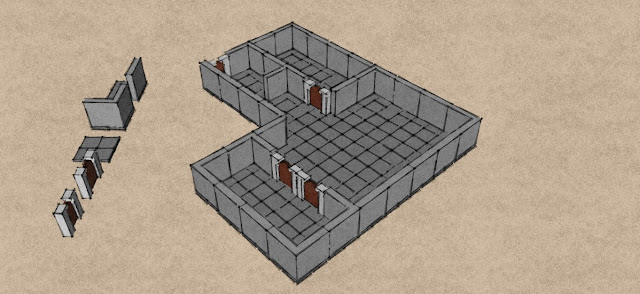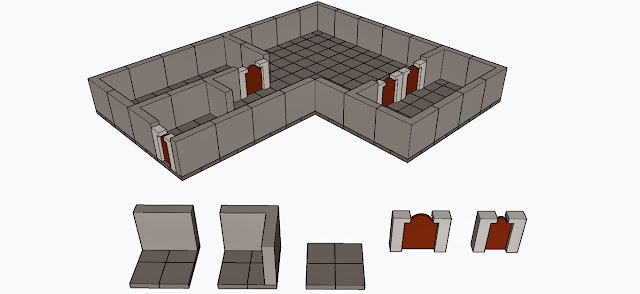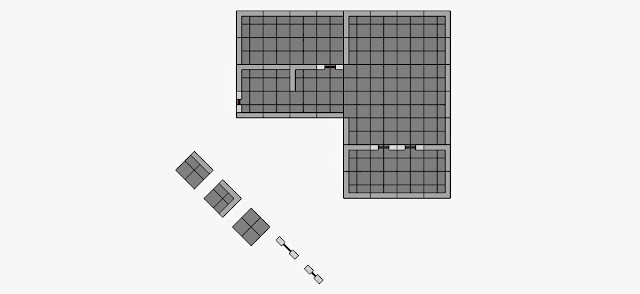So, my birthday was last week, and this weekend we threw a little shindig over at our place with food and board games. A couple of my friends even got me presents, and a lot of those presents just happened to be game related.
One friend got me an awesome set of brushes to add to my mini painting kit.
 |
| The angle brushes are awesome for getting into the hard to reach bits. |
Of course, I couldn't pass up the opportunity to them out, so I busted out the Bones once again, and put a base coat on a dwarven fighter mini.
I'm basing the color scheme for this mini around a bronze palette, which so far is seems to be a nice change from the typical gunmetal/silvery chain mail and armor that seems to be my default. I also think I finally got my brain to shift away from worrying about being perfectly tidy on the base coat. Ultimately, it is more important for that initial layer to have thorough coverage than it is for it to have clean edges. Once you get that first covering, you can more easily go back and tidy things up.
Unfortunately, I can only do so much in one sitting before my hands get tired and my eyes start crossing, so I'll need to leave it where it is for a day or so before continuing with more base touch-ups and highlighting.
Blast From the Past
The other gaming presents I got were only sort of birthday presents. I have found that one of the advantages about being an out-and-proud dice dork is that former dice dork friends will occasionally offer up some of their old kit that they don't plan to use anymore. Such was the case when a couple of my friends mentioned that they had old D&D 2nd edition material they were looking to get rid of. One of these friends did package his set of books as a birthday present, while the other delivered two boxes of box sets to my door after about a month of delivery tag (if that's a thing?)
 |
| I actually took the Monster Manual upstairs to read before bed... just like when I was a kid. |
Anyway, I'm just glad I have a nerdy and understanding Wife who indulges my habits, because this stuff is
- unbelievably awesome inspirational material
- not likely to get used for their main purpose (as game modules) any time soon
- voluminous enough to nearly double the linear footage of my D&D catalog
Despite the fact that I don't think I'll be rolling a 2e game anytime soon, I've been flipping through the books and have already discovered a couple elements that I might even be able to work into the next game session. One of the truly wonderful things about inspiration is that it is not affected by new editions and rule changes.





















